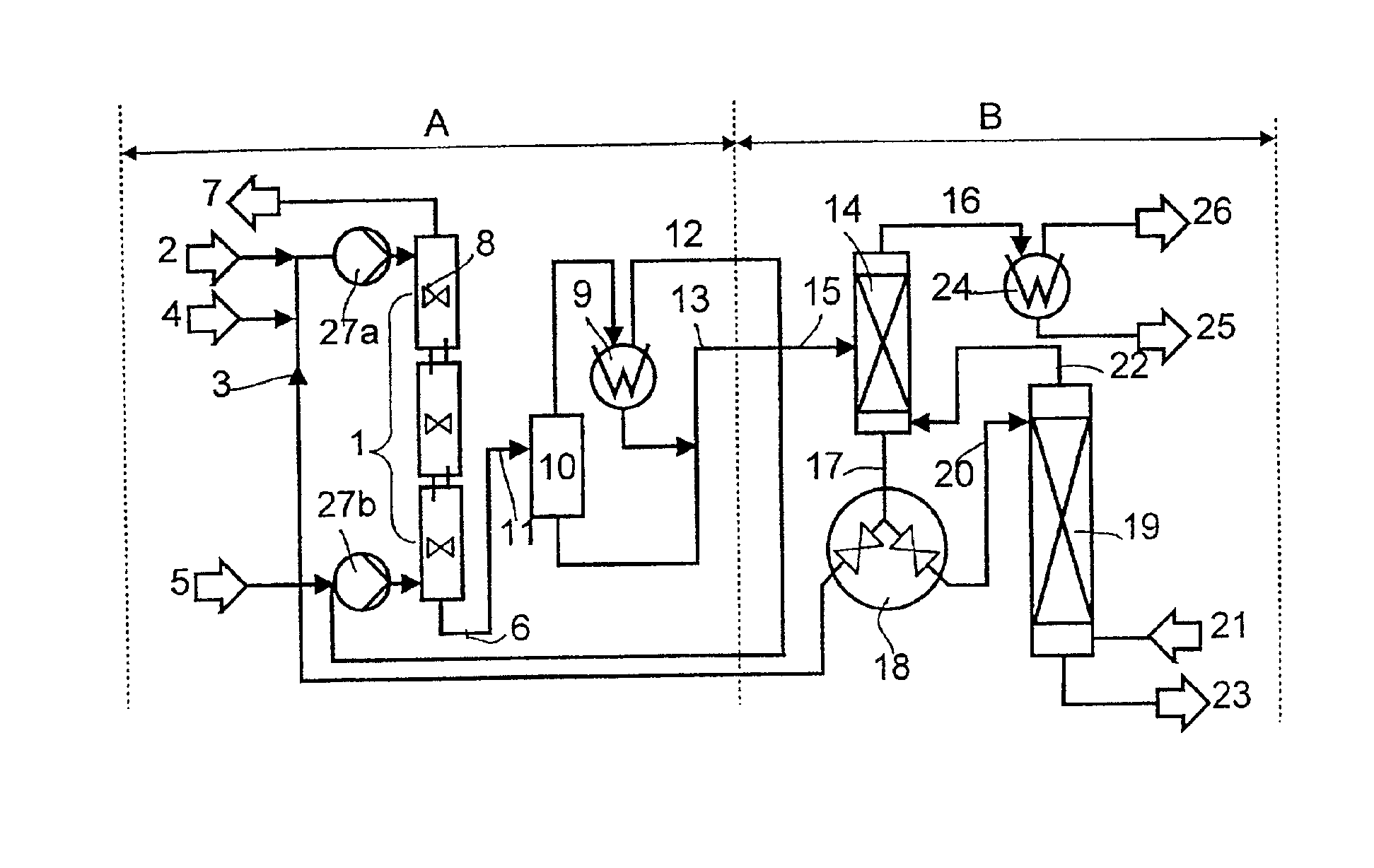Method for the continuous production of methyl formate
a technology of methyl formate and continuous production, which is applied in the direction of separation processes, organic chemistry, pressurized chemical processes, etc., can solve the problems of virtually insoluble engineering problems, high equipment requirements, and inability to meet the requirements of continuous production, and achieves good yields and low equipment requirements.
- Summary
- Abstract
- Description
- Claims
- Application Information
AI Technical Summary
Benefits of technology
Problems solved by technology
Method used
Image
Examples
example 1
[0106]Three upright tube reactors each having a volume of 2 l and each fitted with an external circuit with heat exchangers, feed lines for liquid phase and outlet lines for gas phase in the top region and outlet lines for liquid phase and jet nozzle inlets for gas phase in the bottom region were connected in series above one another so that gas phase introduced at the bottom of the lowermost reactor can flow upward through all three reactors in succession and liquid phase fed in in the top region of the uppermost reactor can flow downward through all three reactors in succession.
[0107]This synthesis arrangement was used to carry out 12 experiments in which methanol and catalyst in the form of a methanolic alkali metal methoxide solution were fed in at the top of the reactor cascade and CO was fed in from below via the jet nozzles. The feed flows are indicated in Table 1. The pressure and the temperature in the reactors were set to the values likewise shown in Table 1.
[0108]The prod...
example 2
[0116]Two tube reactors having a length of 200 cm and an internal diameter of 4.5 cm (volume=3.15 l) and provided with an internal heat exchange tube, inlets for liquid and gas phase in the bottom region and outlets for liquid and gas phase in the top region, with the inlets for the gas phase being configured as jet nozzles, were connected in series above one another in such a way that liquid phase and gas phase introduced at the bottom of the lowermost reactor can flow upward in cocurrent through all three reactors in succession.
[0117]This synthesis arrangement was used to carry out 19 experiments in which methanol, catalyst in the form of a methanolic alkali metal methoxide solution and, through the jet nozzle, CO were fed from the bottom into the reactor cascade. The feed flows are indicated in Table 2. The pressure and the temperature in the reactors were set to the values likewise shown in Table 2.
[0118]The last 4 columns of Table 2 show the experimental results obtained.
[0119]...
PUM
| Property | Measurement | Unit |
|---|---|---|
| Temperature | aaaaa | aaaaa |
| Temperature | aaaaa | aaaaa |
| Fraction | aaaaa | aaaaa |
Abstract
Description
Claims
Application Information
 Login to View More
Login to View More - R&D
- Intellectual Property
- Life Sciences
- Materials
- Tech Scout
- Unparalleled Data Quality
- Higher Quality Content
- 60% Fewer Hallucinations
Browse by: Latest US Patents, China's latest patents, Technical Efficacy Thesaurus, Application Domain, Technology Topic, Popular Technical Reports.
© 2025 PatSnap. All rights reserved.Legal|Privacy policy|Modern Slavery Act Transparency Statement|Sitemap|About US| Contact US: help@patsnap.com


